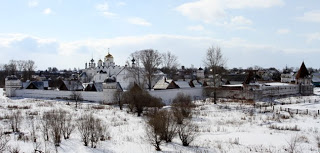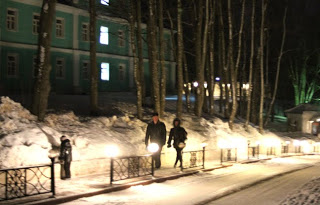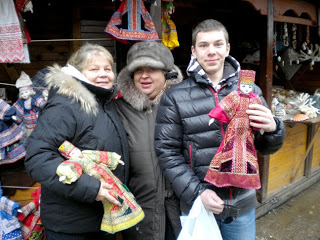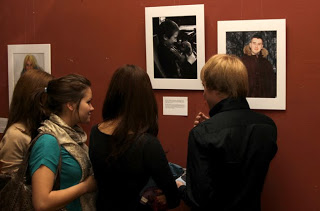The Christ the Savior Cathedral in the center of Moscow is an imposing structure, dominating the skyline in an already impressive downtown. Walking inside is a breathtaking moment of awe as you look up and feel overwhelmed by the majesty of the place—exactly what the architects intended, by the way. It was the largest Orthodox church ever built. Which makes it all the more gut-wrenching when you realize this is the second time this church has been built. And what happened to the first one.
In 1931, the Soviets, after the death of Lenin, demolished the church to build the Palace of the Soviets in its place. Fortunately, or unfortunately, depending on your perspective, the foundation flooded and the building was never built. In the foundation hole that had been dug, they turned it into the largest open air pool in the world. In 1995, the began rebuilding the church and today it has been returned to its former glory. I didn’t take my camera there, knowing I would never be able to shoot inside, but here are a couple links for more information if you’re interested. Just as we were leaving the chanting began for an evening mass. As people began crossing themselves, opposite by the way from the catholic tradition (which is literally one of the reasons the two churches split), we decided to slide out and head for the next stop of the evening.
http://en.wikipedia.org/wiki/Moskva_Pool
http://en.wikipedia.org/wiki/Cathedral_of_Christ_the_Saviour
Mom and I along with Vadim and Natasha went to the Tchaikovsky Concert Hall for a concert by the Ossipov Balalaika Orchestra. It’s really amazing how much sound they can tease out of four stringed, strummed instruments. Except for a few flutes and clarinets and the percussion section, everything else was strummed like a guitar, only much, much faster. There are all sizes of balalaikas as well from the smaller ukulele size, the mandolin traditional size, to the bass balalaika that rests on the floor, but it still played horizontally like a guitar. Music truly does become international though, as we enjoyed that Russian cultural fair.
Which made it all the more amusing when we went to the Starlight Diner for a late dinner. Vadim figured since it was St. Patrick’s day we should have food from home, and I think he was curious how authentic the place was. So, he took us to a little diner near the river, styled very much like a 50s diner with old American posters on the wall and vinyl booth seats. There were some interesting things on the menu, including borscht, blini and pelmini (all Russian) and other dishes like seared Ahi tuna which are far from diner fare, but they did have a good selection of burgers and sandwiches and breakfast all day. It was funny and a lot of fun. And I finally got to pay for a meal. I ended up going with a burger and fries, but I have to say the meat was a little off. I’m not sure the reason, but it wasn’t quite the same flavor of ground beef that we are used to.
All in all, an interesting day of cultural twists and surprises in Moscow..



